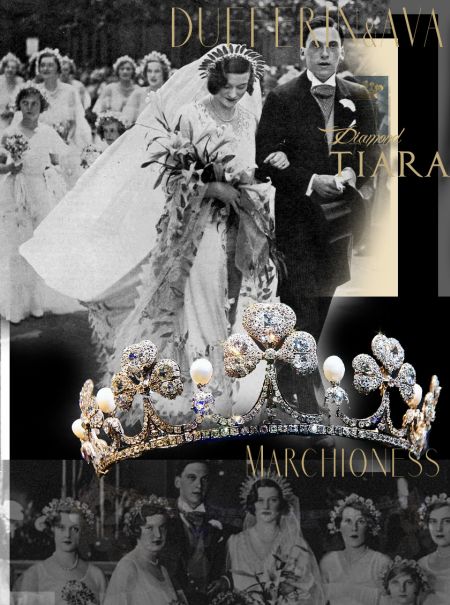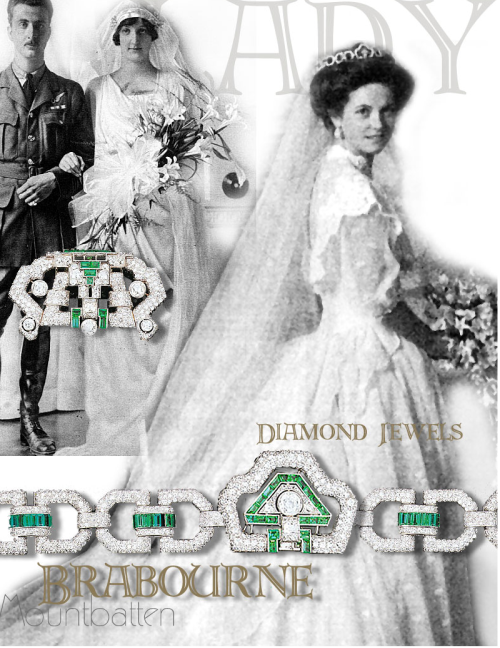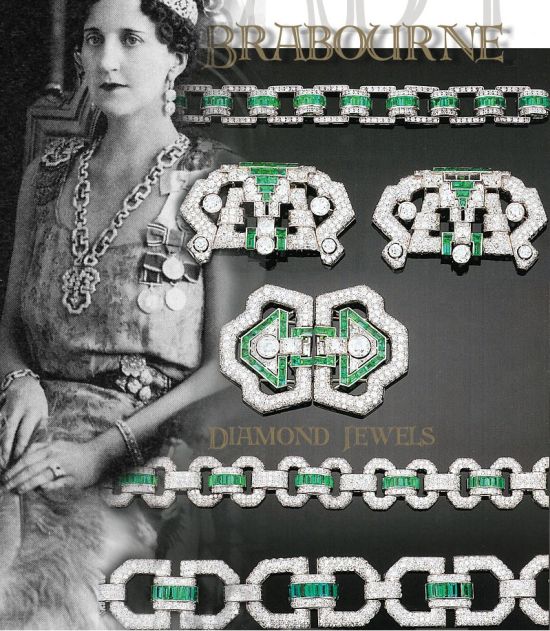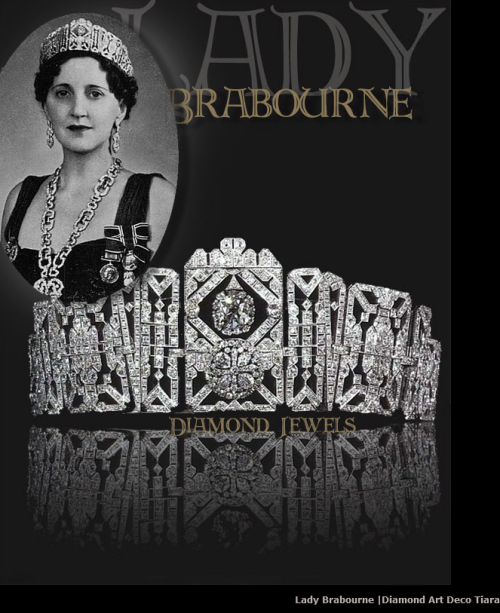The Sunray Diamond Tiara | The Starbust Brooches and Halfmoons – from the the golden casket a gift of the Amer of Afghanistan


Coronation | Coronation Tiaras -Coronation Jewels, royal jewels, royal tiara,royal tiaras, royal diadem, peeress tiara, aristocracy jewels, worn at the Coronation, royalty,royals, princess, countess, gräfin, herzogin, duchess, marchioness,lady, fürstin,fürst,princesses,peeresses with tiaras,


THE VANDERBILT FAMILY JEWELS Jewels of Gladys Vanderbilt Countess Széchenyi




Gladys Moore Vanderbilt’s Cartier Diamond and Amethyst Tiara – and its Surviving Fragment
When Gladys Moore Vanderbilt (1886–1965), the youngest daughter of Cornelius Vanderbilt II and Alice Gwynne Vanderbilt, married Count László Széchényi of Hungary in 1908, her wedding became one of the most celebrated unions of the Gilded Age. To mark this transatlantic marriage, Alice Vanderbilt commissioned Cartier to create a magnificent diamond and amethyst tiara in the Belle Époque style.
The jewel was conceived as eight delicate sprays of lilies, rising gracefully above the bandeau, each set with old-cut diamonds. The innovative design allowed for interchangeable drops: either pear-shaped amethysts or similarly shaped diamonds could be suspended from the sprays, altering the tiara’s appearance according to occasion and fashion.
This tiara was more than a personal adornment; it symbolised the Vanderbilt family’s ambition and their determination to translate American industrial wealth into European aristocratic prestige. Gladys, one of the last of the great American heiresses of her generation, embodied this transfer of fortune and status across the Atlantic.
In the years that followed, the tiara was eventually dismantled-a fate not uncommon among great jewels of the period, as changing styles and inheritance divided once-cohesive parures into smaller, wearable pieces. Yet fragments survived, carrying with them echoes of their original splendour.
One such surviving jewel has now resurfaced: a Cartier diamond brooch, designed as a single lily spray, set with an old-cut pear-shaped diamond weighing 4.55 carats. Originally part of Gladys Vanderbilt’s tiara, the brooch retains the elegance of Cartier’s Belle Époque craftsmanship and stands as a rare tangible relic of the Vanderbilt legacy.
In November 2025, this brooch will be offered at auction in Geneva. Its reappearance not only revives the story of Gladys Vanderbilt’s celebrated wedding gift but also highlights the enduring allure of jewels that once served as instruments of social power, familial aspiration, and transatlantic identity.
In March 1912, Countess Széchenyi’s jewelries worth $200,000 ($8 million today) was stolen from her town residence in Budapest, the detective afterward found the jewels in a motor car garage, where they had been hidden by being wrapped in a piece of newspaper behind a barrel.
The tiara was divided between her children:
Countess Cornelia „Gilia“ Széchényi de Sárvár-Felsövidék 1908–1958 Eugene Bowie Roberts 1898–1983
Countess Alice „Ai“ Széchényi de Sárvár-Felsövidék 1911–1974 Countess Béla Hadik
Countess Gladys Széchényi de Sárvár-Felsövidé 1913–1978, Countess Winchilsea Nottinham |Viscountess Maidstone, Finch Hatton
Countess Sylvia Anita Gabriel Denise Irene Marie „Sylvie“ Széchényi de Sárvár-Felsövidék 1918–1998 Countess Antal Szapáry von Muraszombath Széchysziget und Szapar
Countess Ferdinandine „Bubby“ Széchényi de Sárvár-Felsövidék 1923–2016 Countess Alexander E. Eltz
Through her eldest daughter, Cornelia, she was the grandmother of three – Gladys Vanderbilt Roberts (b. 1934), Cornelia Roberts (1936–1982), who married Count Hans-Heinrich von Coudenhove-Kalergi (1926–2004), and Eugene Bowie Roberts, Jr. (1939–2020).
Through her daughter Alice, she was grandmother to Count László Hadik von Futak (1932–1973) and Count János Hadik von Futak (1933–2004).
Through her daughter Gladys, she was the grandmother of Christopher Denys Stormont Finch-Hatton, the 16th Earl of Winchilsea (1936–1999) and the Hon. Robin Finch-Hatton (1939–2018).
Through her daughter Sylvia, she was the grandmother of Count Pál László Szapáry (b. 1950) and Countess Gladys Vanderbilt Szapáry (b. 1952).
Through her youngest child, Ferdinandine, she was the grandmother of Count Peter von und zu Eltz (b.1948) and Count Nicholas (Nicky) von und zu Eltz (1950–2012)


The forgotten treasure in the ground of the trinket box
Diamond Art Deco Sautoir Necklace from Cartier
After Queen Anne wore it on her wedding day in Athens on 10 June 1948, it was forgotten in a box and nobody realized it was a costly item, once part of the famous large Sapphire Necklace of Queen Marie of Romania and worn on her coronation.
After her death in 1937, she left the sautoir and the large sapphire to her daughter-in-law, Princess Helena of Greece, Crown Princess of Romania.
On 17th November 1947, when the future Queen Elizabeth II married Prince Philip, she wore the diamond sautoir, on the pre-wedding ball together with the greek key or meander diamond tiara.

:::::

Large Sapphire and Diamond Diadem, Sapphire and Diamond Jewels, Pembroke Sapphires …… wedding gift to Lady Beatrice Paget when she married the heir of the Earl of Pembroke, Reginald Herbert, in 1903.

Click for more history about :


PROVENANCE OF THE IMPERIAL SAPPHIRE PARURE
A cord in writing, found between the boxes of jewels, stated that these sapphire jewels were given to Grand Duchess Stephanie of Baden, by her cousin Hortense de Beauharnais, Queen of Holland.
Such an origin is very likely. In many paintings Queen Hortense of Holland, and her mother Empress Josephine, can be seen wearing precious belts. Furthermore, Hortense’s financial papers, which are kept in the Napoléon archive in Paris, give evidence of her fortune between 1817 and 1837, the year she passed away. They show that she left Paris in 1816 with little money, but a lot of jewellery.

After Grand Duchess Stephanie’s of Baden death in 1860 the sapphire parure described as
‘necklace, pendant, earrings, seven pins and a belt’
was inherited by Stephanie’s second daughter, Josephine, Princess of Hohenzollern Sigmaringen.
See at the coronation picture, the sisters of Napoleon Caroline, Pauline, Elise and Hortense are in court gown with „jeweled belts“ and „bandeau head ornaments“ also stetted with large pins of precious centers, like the brooches and pins.

Under Napoléon’s court, belts decorated with precious stones were part of any jewellery parure, as fashion dictated that the waist was very high on dresses and court ladies needed a belt which was placed just under the décolleté. More about the history:
Als 2. Gräfin Mountbatten von Burma, Ururenkelin der Königin Victoria, Großnichte der letzten Zarin von Russland, Cousine ersten Grades von Prinz Philip und Tochter des letzten Vizekönigs von Indien, wurde die verstorbene Patricia Edwina Victoria Mountbatten 1924 in eine schillernde Dynastie königlicher und politischer Beziehungen hineingeboren. Während ihres bedeutenden Lebens inmitten des kulturellen Establishments Großbritanniens ist sie für ihre „unerschütterliche Beharrlichkeit und ihren mitreißenden Sinn für Humor“ bekannt und in Erinnerung geblieben.

Als älteste Tochter von Louis Mountbatten, 1st Earl Mountbatten of Burma, und der glamourösen Erbin und Philanthropin Edwina Ashley (1900-1960), genoss Patricia eine unkonventionelle Erziehung, von Wochenendpartys mit König Edward III. und Wallis Simpson auf dem elterlichen Anwesen in Hampshire bis hin zur Evakuierung am Vorabend der deutschen Luftangriffe in London (Blitz), um bei Mrs. Cornelius Vanderbilt III. in ihrem palastartigen Apartment in der Fifth Avenue in New York unterzukommen.
Im Jahr 1943, im Alter von neunzehn Jahren, trat Patricia in den Women’s Royal Navy Service ein.
Dort lernte sie John Knatchbull, 7. Lord Brabourne (1924-2005), kennen und lieben – eine Begegnung, die zu einer dauerhaften Liebesbeziehung und einer fast sechzigjährigen Ehe führen sollte. Während seiner Zeit als Kapitän der Streitkräfte hatte Brabourne für Patricias Vater in Indien gearbeitet und wurde später ein für den Academy Award nominierter Filmproduzent, der hinter Titeln wie A Passage to India und den Agatha-Christie-Verfilmungen Death on the Nile und Murder on the Orient Express stand. Ihre Hochzeit in der Abtei von Romsey im Jahr 1946 wurde von tausenden Menschen verfolgt, die die Straßen säumten.
Der Erzbischof von Canterbury vollzog die Zeremonie, bei der auch der König und die Königin anwesend waren, die königlichen Prinzessinnen Elizabeth und Margaret unter den Brautjungfern und auch Prinz Philip.
Als Patricia die Adelstitel ihres Vaters erbte, wurde das Paar zu einem der ganz wenigen Ehepaare in England, die jeweils einen eigenen Adelstitel innehatten und die Hüter zweier großer Erbschaften wurden.
Zu Johns Erbe gehörte Mersham le Hatch, ein elegantes Haus von Robert Adam in der Landschaft von Kent, in dem sich die Familie Knatchbull im 15. Jahrhundert niedergelassen hatte. Ausgestattet von Thomas Chippendale in den 1770er Jahren, befanden sich dort Objekte mit außerordentlich unterschiedlicher Provenienz, unter anderem des Entdeckers und Botanikers Sir Joseph Banks, der mit Cooks erster Expedition nach Australien reiste, Jane Austens geliebter Nichte Fanny und der Marquesses of Sligo. Aus dem glamourösen Art-Déco-Penthouse ihrer Eltern in der Park Lane erbte Patricia kostbare Gegenstände, die mit ihren Eltern in Verbindung gebracht werden können – mit Kostbarkeiten von Edwinas Großvater mütterlicherseits, dem Finanzier Sir Ernest Cassel – und ihrer Zeit in Indien.
Im Laufe ihres Lebens war Lady Mountbatten Schirmherrin von über einhundert Wohltätigkeitsorganisationen. Sie bewältigte ihre eigenen Tragödien mit außerordentlichem Courage und Anmut und vermittelte dies in der Unterstützung von Menschen in Not.
Am 24. März 2021 werden über 350 Lose – darunter Juwelen, Möbel, Gemälde, Skulpturen, Bücher, Silber, Porzellan und Vitrinenobjekte – aus Newhouse, Patricias and Johns charmanten Haus aus dem 18. Jahrhundert, bei Sotheby’s zum Verkauf angeboten, wobei die Schätzpreise von £ 80 – 100,000 reichen. Mit jedem Los haben Betrachter und Besucher die Möglichkeit, die Welt einer bedeutenden Familie durch die Kunst und Objekte, mit denen sie lebten, zu erkunden und so die Wege der bedeutendsten Persönlichkeiten des zwanzigsten Jahrhunderts zu kreuzen.
„Sie hatten diese Vorkehrungen mit uns besprochen, und wir setzen einfach ihre Pläne in die Tat um. Natürlich werden wir viele Dinge aufbewahren, darunter vor allem Gegenstände, die einen sentimentalen Wert haben und die wir sehr lieben.“ äußert sich die Familie Mountbatten dazu.
Zum Verkauf kommt auch die Banks Diamanten – eine historische Brosche -der Familie Knatchbull.
Countess Mountbatten of Burma’s treasures on sale!




Elizabeth Angela Veronica Rose Nall-Cain, only daughter of Lord and Lady Brocket god-daughter of Queen Elizabeth the Queen Mother, wearing the heirloom diamond tiara, of the family when she married at St James, Spanish Palace the Earl of Bective, son of the Marquess of Headfort, in 1958,
Her mother Lady Brocket wore the diamond palmette tiara, also at Opening Parliament in 1936 in the style of the time on her forehead and the matching diamond fringe necklace and at the coronation in 1937.

When Antalya Stephanie Lauren Nall-Cain, daughter of the Lord Brocket, married Alexander Frederick Prince of Prussia (b.1984), son of Andreas Prince of Prussia in September 27th, 2020 at Brockethall, she wore traditionally the palmette diamond tiara of her family.

Antalya Princess of Preussen The new Princess of Preussen, chose not a wedding tiara of the „Preussen“ family. The bride wore a stunning ivory gown with cape detail, adorn with her family tiara, the Brocket Tiara. It had previously been worn on the wedding day of her grandmother and aunt, see on top. The kokoshnik base could be worn without the fountains or diamond palmettos on top, in a very sleek way.

The Earl of Southesk and his fiancée Camille Ascoli were married on, 5 September 2020. The Countess of Southesk wore the Fife Fringe Tiara, which had been on exhibition at Kensington Palace, since 2018. The diamond tiara was taken off display for the Carnegie wedding.
It was the wedding gift of Queen Alexandra and King Edward to their daughter the Princess Royal Louise, Duchess of Fife.
Charles „Charlie“ Duff Carnegie, Earl of Southesk, was born on 1 July 1989. He is the eldest of three sons of David Carnegie, 4th Duke of Fife, and his wife, the former Caroline Ann Bunting. Charlie Southesk is a great-great-grandson of King Edward VII.





::::::::::::::



::::::::::::::
